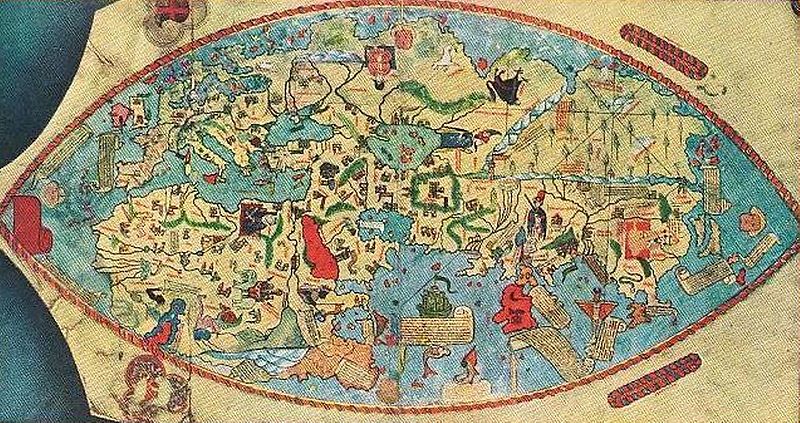
| NAVIGATION: | Index of Dr. Weller's Class Material | Index of Dante Material |

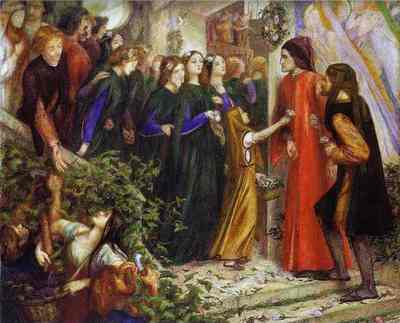
...And betaking me to the loneliness of mine own room, I fell to thinking of this most courteous lady, thinking of whom I was overtaken by a pleasant slumber, wherein a marvelous vision was presented to me: for there appeared to be in my room a mist of the colour of fire, within the which I discerned the figure of a Lord of terrible aspect to such as should gaze upon him, but who seemed there-withal to rejoice inwardly that it was a marvel to see. Speaking he said many things, among the which I could understand but few; and of these, this: "I am thy Lord". In his arms it seemed to me that a person was sleeping, covered only with a crimson cloth; upon whom looking very attentively, I knew that it was the Lady of the Salutation, who had deigned the day before to salute me. And he who held her held also in his hand a thing that was burning in flames, and he said to me "Behold thy heart". But when he had remained with me a little while, I thought that he set himself to awaken her that slept; after the which he made her to eat that thing which flamed in his hand; and she ate as one fearing.She is the conduit of God's love, of blessedness.
The Apostle's Creed (Lutheran):
I believe in God, the Father Almighty,
maker of heaven and earth.
And in Jesus Christ, his only Son, our Lord,
who was conceived by the Holy Spirit,
and born of the virgin Mary,
suffered under Pontius Pilate,
was crucified, died and was buried.
He descended into hell.
On the third day He rose again from the dead.
He ascended into heaven
and sits at the right hand of God the Father Almighty.
From thence He will come to judge the living and the dead.
I believe in the Holy Spirit,
the holy Christian church,
the communion of saints,
the forgiveness of sins,
the resurrection of the body,
and the life everlasting. Amen.

The figures in the picture are all symbolical; they represent classes of people (such as kings or bishops), or kinds of people (such as the ambitious or materialistic).
This is a simple, traditional type of allegory which conveys a moral lesson, such as "you can trust only in God, not in Fortune."
Dante's kind of allegory:
The headnotes generally focus on the moral lesson, as in the following from p. 65:Discussion Questions:
These are the GLUTTONS. In life they made no higher use of the gifts of God than to wallow in food and drink, producers of nothing but garbage and offal. Here they lie through all eternity, themselves like garbage.
This is a valid interpretation, but there is more to be said: The punishment of the sin also conveys the sinner's experience of the sin is as the sinner is committing it.
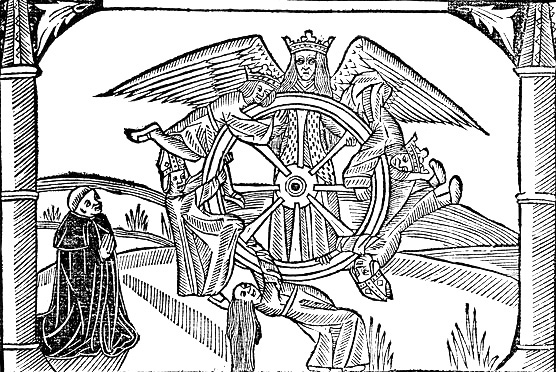
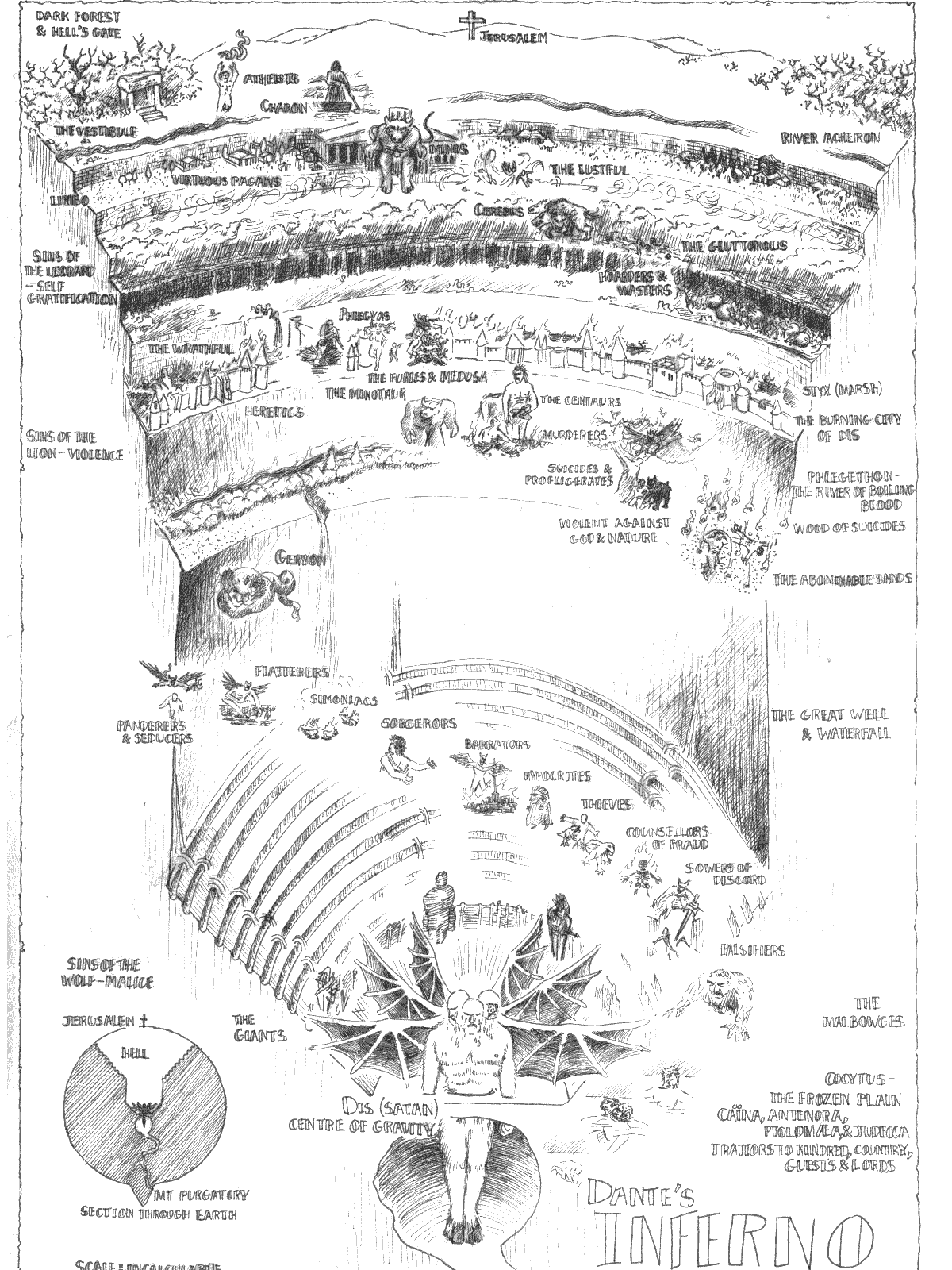
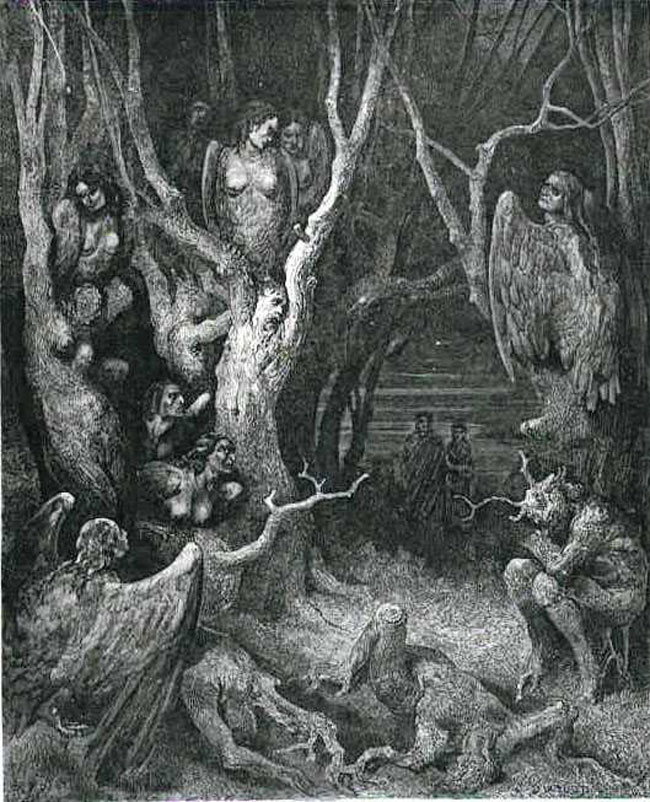
.jpg)
The drawing was done by Francesco Scaramuzza in the 19th Century.
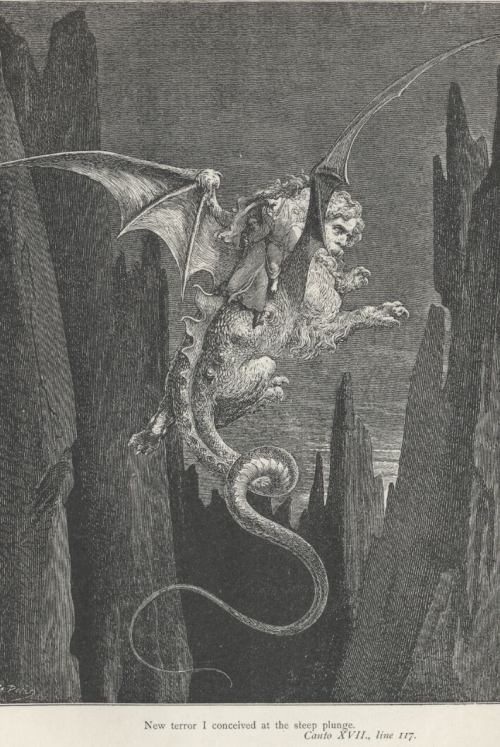
Artist is Gustave Doré
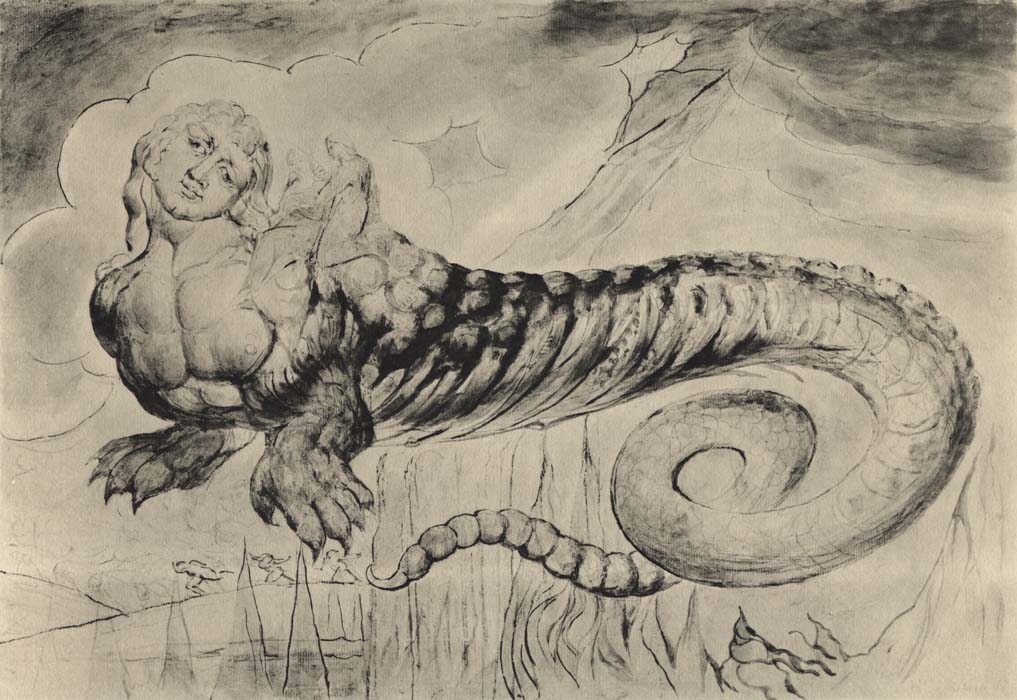
Artist is William Blake
- He was very learned in the Scriptures and of great natural parts, and a very prudent and able man, and of great knowledge and memory; he was very proud and haughty and cruel to his foes and adversaries, and of a high stomach, and greatly feared by all, and he greatly exalted and magnified the state and counsels of the Holy Church. . . . He was magnanimous and generous to those who pleased him, and to all valorous men; very avid of worldly pomps according to his degree, and very covetous, not looking closely nor keeping a strict conscience when it was a question of gain, in order to aggrandize the Church and his own family. . . . He was more worldly than befitted his dignity, and he did many things which were displeasing to God. --Villani (a 14th-cent. chronicler)
Pope Boniface VIII proclaimed 1300 a year of Jubilee (the first Holy Year) and granted plenary indulgences (the remission of temporal punishment in Purgatory) to the tens of thousands of pilgrims to Rome. It was at this time that he began to occasionally dress in imperial regalia and exclaim, "I am Caesar, I am the Emperor." He commissioned so many statues of himself that he was accused of encouraging idolatry. On November 18, 1302, Pope Boniface VIII issued his most famous bull, Unam sanctam. He declared sole power over all spiritual and temporal matters, "...it is altogether necessary to the salvation for every human creature to be subject to the Roman Pontiff." --Cultural Catholic
